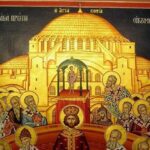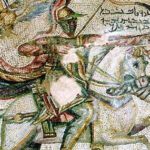The award winning Channel 9 TV series “Lego Masters” has proved to be popular family viewing over the past month. Viewers have been awed at the creativity and ability of the contestants to turn humble Lego bricks into amazing creations. Within 28 hours, a blank Lego board is transformed into a battle zone between a wizard and a marauding army; a circus tent and moving trapeze artists; or an emotionally charged scene of wolves threatening drinking deer: All these amazing stories created by simply placing thousands of small pieces of interlocking plastic.
Lego is popular and fun, but it also raises some of life’s biggest questions.
Lego is popular and fun, but it also raises some of life’s biggest questions. We explored some of these ideas in a recent episode of “Bigger Questions”, where we spoke with a finalist from Season 2 of “Lego Masters”, Josh Taylor. He finds Lego to be a great way of building relationships and connection with students at his school, but Lego also points to something bigger.
Why are We Creative?
At the heart of building with Lego, is a delight in creativity and imagination. Yet this raises the question: why are we creative?
Humans are unique among all living creatures in this capacity. We don’t see dolphins drawing pictures on the ocean floor, or elephants gathering for an evening of storytelling, or dogs sculpting rocks. Imagination and creativity appear to be uniquely human attributes.
Perhaps imagination and creativity are just inexplicable elements of human nature? Perhaps they are tools that help humans in our quest for survival? But given the joy we feel in these things, maybe they mean something more. Perhaps they point to an intelligent, creative creator who has crafted humans in his own image. Maybe the human imagination is a pointer to God.
Creation is Hard Work
Creation isn’t easy. As Josh points out in the show, it’s hard work creating anything of substance and scale with Lego.
Author and pastor, John Piper agrees—suggesting that:
Imagination may be the hardest work of the human mind. And perhaps the most God-like. It is the closest we get to creation out of nothing.
Indeed imagination may in one sense be “creation out of nothing” (if you consider brain synapses nothing), but turning that imagination into a reality—a ‘creation’—is even harder. I asked Josh, is it hard to create something from nothing and he responded by saying, “well, we’re not really creating from nothing, for we have something to create with—Lego bricks.”
This gets to the heart of this big question: Lego creations are not strictly creations from nothing, but reorderings of what is already there. There is an echo here of the nature of the universe—like the connection and assembly of the small building blocks of life (amino acids, for example) into larger, more complex things. Yet to do this—to order these small building blocks into greater functioning wholes—requires intelligence and a plan.
Again, perhaps the ordering of the building universe is the result of chance and time. Or again, perhaps this is a pointer to a powerful and intelligent mind behind the universe?
As one of the most famous scientists of all time Sir Isaac Newton once remarked:
This most beautiful system of the sun, planets and comets, could only proceed from the counsel and dominion of an intelligent and powerful Being.
Why is there something rather than nothing?
Yet, this raises the even bigger question and more fundamental question of why there is something rather than nothing? Why is there ‘stuff’: amino acids, elements or Lego bricks at all in a ‘universe’?
We have to choose between, ‘it’s just there and we really don’t know why’ or the theistic explanation, that there is a Great Creator at work behind the scenes.
It’s a question that has puzzled philosophers and thinkers for centuries. Some atheists, like Lawrence Krauss, who wrote a book called, A Universe from Nothing, attempt to explain this, by claiming that the universe arose naturally and inevitably from the operation of gravity on the quantum vacuum. But this effectively evades the question since—as he admits in his book—his ‘nothing’ isn’t really nothing:
While [Cosmic Inflation = “The Big Bang”] demonstrates how empty space endowed with energy can effectively create everything we see, along with an unbelievably large and flat universe, it would be disingenuous to suggest that empty space endowed with energy, is really nothing. (p.152)
Atheists have consistently struggled with this question, indeed when the famed philosopher Bertrand Russell was asked why he thought the universe exists, answered: “I should say that the universe is just there, and that’s all”.
Again, to explain why there is something rather than nothing, we have to choose between, ‘it’s just there and we really don’t know why’ or the theistic explanation, that there is a Great Creator at work behind the scenes.
Lego is Awesome
Lego is a wonderful thing, it’s fun, enjoyable and colourful—it’s awesome! But it also gives us an insight into some of life’s biggest questions, and a pointer that maybe the God of the Bible could indeed be the Master Builder behind this beautiful creation we all inhabit.
By faith we understand that the universe was formed at God’s command, so that what is seen was not made out of what was visible. (Heb 11:3)















